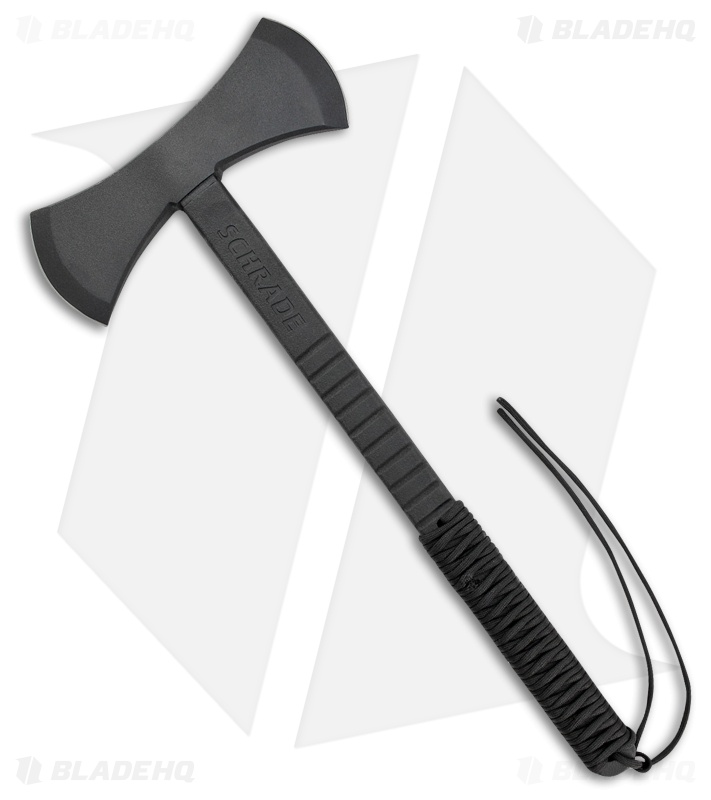

I remember the first push lawnmower my family bought when I was about 10. I agree that I'd rather have to replace a few axe handles instead of having hand and wrist problems. These two woods also make superb bow woods due to the springy and tough nature. I think this is unique for this particular axe type though.Ĭlick to expand.This is probably why all modern wooden axe handles are made from hickory or ash (I prefer hickory, some prefer ash) as it is a very flexible wood. This handle shape was designed to allow the axe of pivot back and forth in the hand when holding in middle of handle. The GB Swedish Carving Axe has a VERY distinct curve but this is to enable the a different swing on an axe that is meant to be held in the middle of the handle. The last part of "curved vs straight" is in types of carving axes. I, however would NOT want someone who is most comfortable using a straight handle, suddenly switching to curved and having an accident. BIG difference.įrom a pure physics standpoint, I would say curved over straight (all else being equal) simply due the less vibrations transmitting into my hands and wrists over the course of the day. It can be such a difference as a left handed person using a right handed can opener. Some people are just more comfortable with a curved or straight handle and we can all agree that the one that the user is most comfortable with will have the best effect in those hands. The last but probably most important is the user experience. When the grain is completely the wrong direction and a curved handle, grain run-out is a near certainty but when straight handled, not so much. However the more curves one carves into a piece of wood, the greater the chance of grain run-out. When perfectly oriented, one should have zero grain run-out. One other thing that can have great effect of curved vs straight is grain orientation. As for the amount of extra power one can transfer to the wood during the swing, I think the butt of the axe has the most to do with it as that will act either as a "don't let axe fly out of my hands" vs a true fulcrum which will aid in a last moment pivot adding a slight increase in head speed thus effecting the amount of work per swing. Someone please correct any incorrect assumptions I have made.Ĭlick to expand.When you take into account all the different head shapes and different type of tasks (felling vs splitting vs controlled carving) you greatly increase the variables. If it was straight, to keep the same strength, it has to be thicker thus effecting the balance so to compensate, need to make it shorter thus decreasing the power.Īll this adds up to making a curved handle superior to straight with the exception of the double bit as one has to be able to switch sides and still swing and move the hand down the haft the same. If attempting to make a perfectly balanced axe with a 3.5# head, one could make a curved handle longer keeping the balance but since it is longer, one gets more power from it. There is a 3rd benefit and that is because a curved handle is stronger, one can make it thinner and still work fine also making the handle lighter having more of the total weight in the head rather then the handle making balancing easier. This lack of shock to the hands will also make your hands and wrists take less abuse over time thus making it more comfortable. This lack of shock will tend to make a curved handle last longer (not counting over-strikes as that has very different mechanics) over time. The butt of the axe helps make a fulcrum in the swing but this can be found on the butt swell of double bit straight handles. On a hawk handle that is perfectly straight and darn near perfectly round (slight oval for some) you'll feel shock no matter which way you hit it. If you strike the back of the bit (in line with cutting and the handle curve) you don't feel any noticeable shock. On a curved handle, you'll feel a shock (vibration) on the other end. This can be observed by simply holding up your axe from the bottom of the handle and with your other hand, strike the side of the head. Hence why curved axe handles deliver less shock to the hand vs something like a hawk handle or a double bit. When attempting to run one wave through another wave, they get canceled out. On impact, a shock is transferred through the handle and this shock is also a wave. When you look at a curved axe handle, it has a VERY distinct shape. What DOES change is the vibration through the handle. An axe swing with a 3# head on a 30 inch handle does the same amount of force no matter if curved or straight. It has to do with strength over time and shock on the handle and user.


 0 kommentar(er)
0 kommentar(er)
